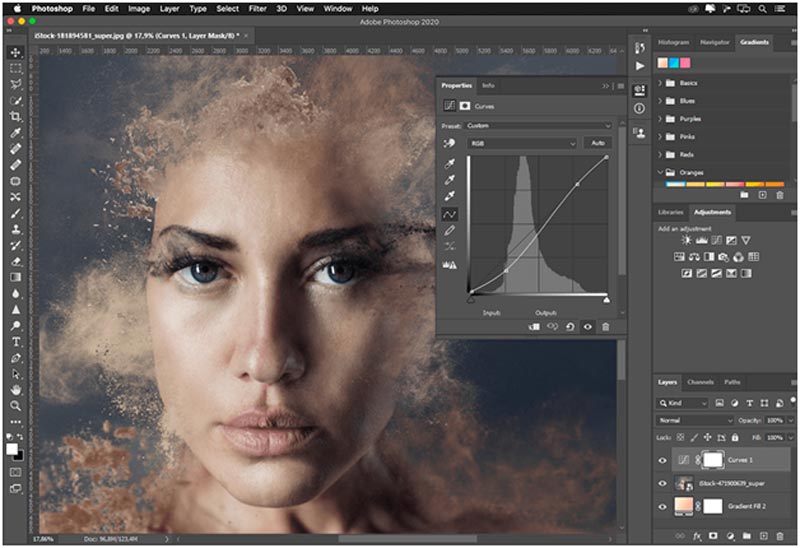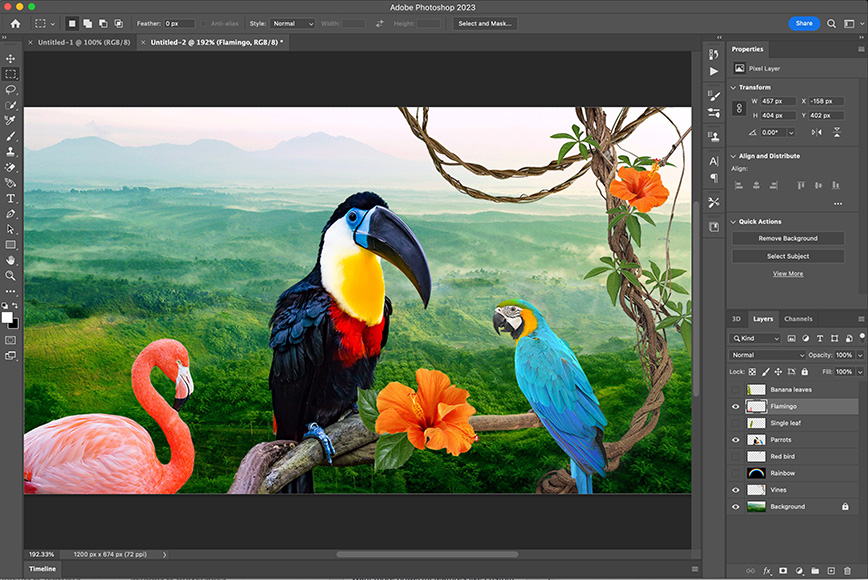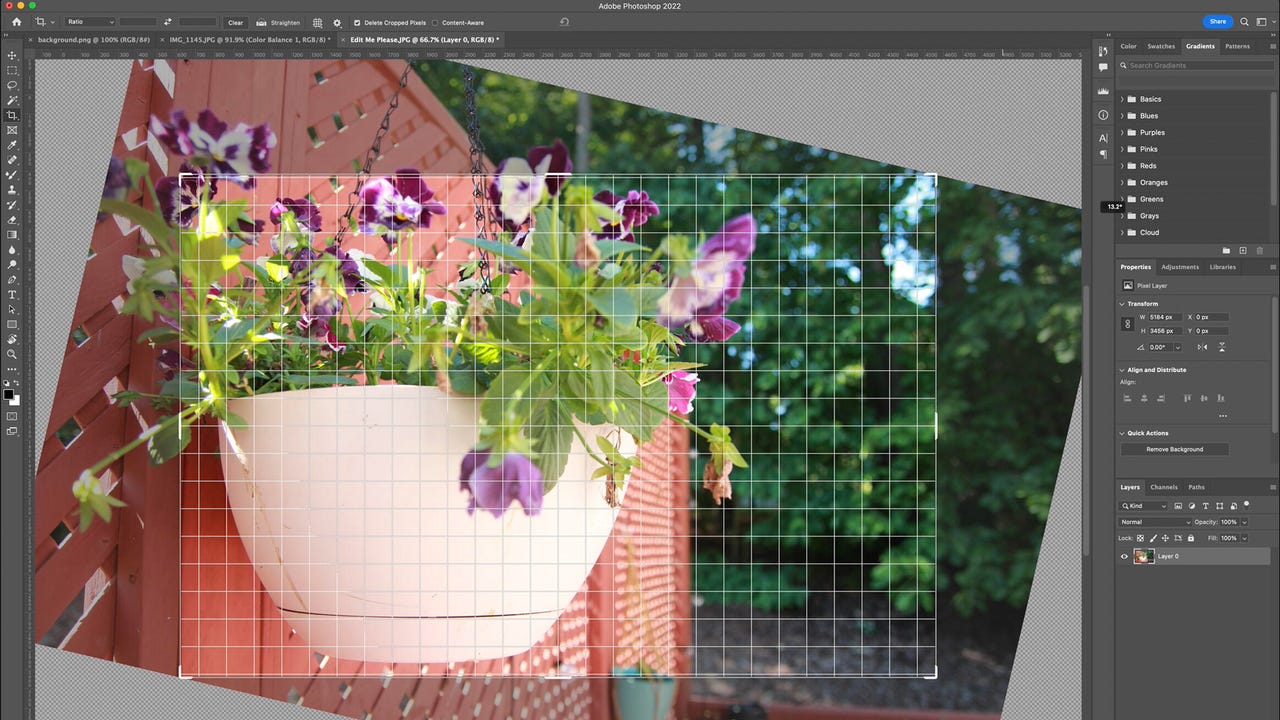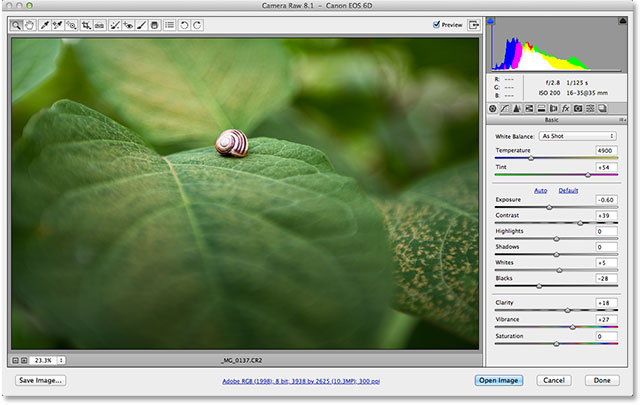Can we use adobe photoshop for photo retouching?
 Yes, Adobe Photoshop is a popular and powerful software tool that can be used for retouch graphics. With its wide range of tools and features, Photoshop allows you to enhance, manipulate, and retouch digital images to achieve desired results. Some common photo retouching tasks that can be done in Photoshop include removing blemishes, wrinkles, and imperfections, adjusting brightness, contrast, and color balance, smoothing skin tones, and applying various artistic effects.
Yes, Adobe Photoshop is a popular and powerful software tool that can be used for retouch graphics. With its wide range of tools and features, Photoshop allows you to enhance, manipulate, and retouch digital images to achieve desired results. Some common photo retouching tasks that can be done in Photoshop include removing blemishes, wrinkles, and imperfections, adjusting brightness, contrast, and color balance, smoothing skin tones, and applying various artistic effects.Photoshop provides a variety of tools such as healing brushes, clone stamp, content-aware fill, and adjustment layers, which can be used for precise and professional-level photo retouching. Additionally, Photoshop supports layers, masks, and blending modes, which provide a non-destructive workflow and allow for easy experimentation and fine-tuning of retouching edits.
However, it’s important to note that using Photoshop for photo retouching requires a certain level of skill and expertise. It may take time and practice to become proficient in using Photoshop for retouching tasks, and it’s important to use the software responsibly and ethically, respecting the integrity of the original photo and avoiding excessive manipulation that may result in unrealistic or misleading images.
Can we retouch a photo in Adobe photoshop?
 Yes, you can retouch a photo in Adobe Photoshop, which is a popular software for photo editing and manipulation. Photoshop offers a wide range of tools and features that allow you to enhance and modify photos to achieve desired results. Some common photo retouching tasks in Photoshop include adjusting exposure, color correction, skin retouching, removing blemishes or imperfections, and adding or removing objects from an image.
Yes, you can retouch a photo in Adobe Photoshop, which is a popular software for photo editing and manipulation. Photoshop offers a wide range of tools and features that allow you to enhance and modify photos to achieve desired results. Some common photo retouching tasks in Photoshop include adjusting exposure, color correction, skin retouching, removing blemishes or imperfections, and adding or removing objects from an image.Here are some steps you can follow to retouch a photo in Photoshop:
- Open the photo in Photoshop: Launch Adobe Photoshop and open the photo you want to retouch by going to File > Open.
- Make a copy of the photo: It’s always a good practice to work on a duplicate layer to avoid making permanent changes to the original photo. Right-click on the Background layer in the Layers panel and select Duplicate Layer. You can rename the duplicated layer for easy reference.
- Use various tools for retouching: Photoshop offers a wide array of tools for retouching, such as the Healing Brush Tool, Clone Stamp Tool, Spot Healing Brush Tool, and Patch Tool, among others. These tools can be used to correct imperfections, remove blemishes, and adjust colors and tones to achieve the desired results. You can also use selection tools like the Lasso Tool, Magic Wand Tool, or Quick Selection Tool to make precise selections for retouching.
- Make adjustments: Use adjustment layers such as Levels, Curves, Hue/Saturation, and Color Balance to make overall adjustments to exposure, color, and tone in the photo. Adjustment layers allow you to make non-destructive edits, which means you can modify or remove them later without affecting the original image.
- Save your work: Once you are satisfied with your retouching edits, save your work by going to File > Save As and choose a file format such as JPEG or TIFF. You can also save your Photoshop document (.PSD) if you want to preserve layers and editable settings for future editing.
Remember, photo retouching is a subjective process, and the extent of retouching depends on your artistic vision and the desired outcome.
How much do photo touch ups cost?
 The cost of photos retouch can vary depending on various factors, including the complexity of the editing needed, the experience and expertise of the photo editor, the geographic location, and the level of demand for photo editing services in the market.
The cost of photos retouch can vary depending on various factors, including the complexity of the editing needed, the experience and expertise of the photo editor, the geographic location, and the level of demand for photo editing services in the market.
As a rough estimate, basic photo touch-ups such as color correction, exposure adjustments, and minor blemish removal may start from $5 to $20 per photo for basic editing. However, more advanced editing such as object removal, background replacement, and extensive retouching can cost $20 to $100 or more per photo, depending on the complexity and time required for the task. High-end professional photo retouching services for commercial or fashion photography may cost even more.
It’s important to note that prices can vary widely and it’s best to check with individual photo editing service providers or freelance photo editors for their specific pricing structure. Additionally, some photo editing services may offer bulk discounts or packages for multiple photos, so it’s worth inquiring about any available deals.
How long does it take to learn retouching?
 The time it takes to learn fixing photos, like any skill, can vary depending on several factors, including your prior experience with photography, your level of dedication and practice, the specific retouching techniques you want to learn, and the resources available for learning. Generally, it can take several weeks to several months of consistent practice and learning to become proficient in retouching.
The time it takes to learn fixing photos, like any skill, can vary depending on several factors, including your prior experience with photography, your level of dedication and practice, the specific retouching techniques you want to learn, and the resources available for learning. Generally, it can take several weeks to several months of consistent practice and learning to become proficient in retouching.If you are starting with no prior experience in photography or retouching, you may need to first learn the basics of photography, including composition, exposure, and camera settings, before diving into retouching. This may add additional time to your learning process.
To become proficient in retouching, you will need to familiarize yourself with photo editing software such as Adobe Photoshop, which is commonly used in the industry. Learning the various tools, techniques, and workflows in Photoshop, as well as understanding concepts such as layers, masks, and color correction, can take time and practice.
The resources you use for learning can also impact the time it takes to learn retouching. There are many online tutorials, courses, books, and other educational materials available that can help you learn retouching at your own pace. Attending workshops or classes, and getting feedback from experienced retouchers can also accelerate your learning process.
Ultimately, the time it takes to learn retouching depends on your individual learning style, the amount of time and effort you dedicate to practice, and the complexity of the retouching techniques you want to master. It’s important to be patient with yourself and practice consistently to improve your skills over time.
Is editing and retouching the same?
 No, editing and retouching are not the same. While they are related terms often used in the field of photography and image manipulation, they refer to different processes.
No, editing and retouching are not the same. While they are related terms often used in the field of photography and image manipulation, they refer to different processes.Editing generally refers to the process of selecting and modifying a photograph or image to achieve a desired result. This may involve tasks such as cropping, adjusting exposure, contrast, and color balance, and applying filters or effects to enhance the overall composition or mood of the image. Editing is typically done to improve the aesthetic or visual quality of a photograph or image, and it can be performed using various software tools such as Adobe Photoshop, Lightroom, or other photo editing software.
Retouching, on the other hand, specifically refers to the process of making subtle adjustments to an image to remove or reduce imperfections or blemishes. This may include tasks such as removing skin blemishes, wrinkles, or scars, whitening teeth, removing stray hairs, and other cosmetic enhancements. Retouching is often used in portrait photography and fashion photography to enhance the appearance of the subject or to achieve a desired level of perfection in the final image. Retouching is also typically performed using specialized retouching tools and techniques in photo editing software.
In summary, editing is a broader term that encompasses various adjustments and modifications made to an image for overall improvement, while retouching specifically refers to the process of making cosmetic adjustments to achieve a desired level of perfection in an image. Both editing and retouching are important techniques used in image manipulation and can be used in combination or separately, depending on the desired outcome and the specific requirements of the image being worked on.
Is there a free app to touch up photos?
 Yes, there are several free apps available for touching up photos on various platforms such as smartphones, tablets, and desktop computers. Here are a few popular ones:
Yes, there are several free apps available for touching up photos on various platforms such as smartphones, tablets, and desktop computers. Here are a few popular ones:
- Adobe Photoshop Express: Adobe Photoshop Express is a free photo editing app available on both mobile devices and web browsers. It offers basic photo editing tools such as cropping, straightening, exposure adjustment, color correction, and filters.
- Snapseed: Snapseed is a free photo editing app available on mobile devices. It offers a wide range of advanced editing tools, including selective adjustments, curves, filters, and brushes. It also has a user-friendly interface and supports RAW file editing.
- GIMP: GIMP (GNU Image Manipulation Program) is a free and open-source image editing software available for desktop computers. It has a wide range of powerful tools for photo retouching, including layers, masks, filters, and advanced color correction.
- Pixlr: Pixlr is a free online photo editing app that offers a variety of tools for image retouching, including cropping, resizing, filters, and overlays. It also has a user-friendly interface and supports layers for advanced editing.
- Fotor: Fotor is a free photo editing app available on mobile devices and web browsers. It offers basic editing tools such as cropping, exposure adjustment, color correction, and filters. It also has a collage maker and batch processing feature.
These are just a few examples of free photo editing apps available for touch-ups. There are many other options available depending on your specific needs and preferences. It’s always a good idea to explore different apps and find the one that best suits your requirements.

